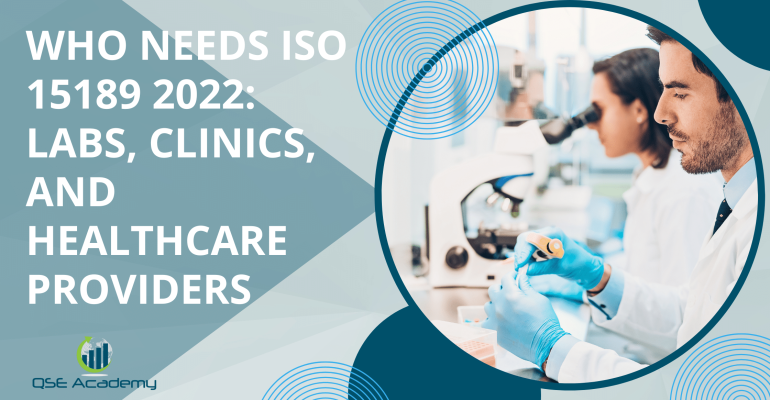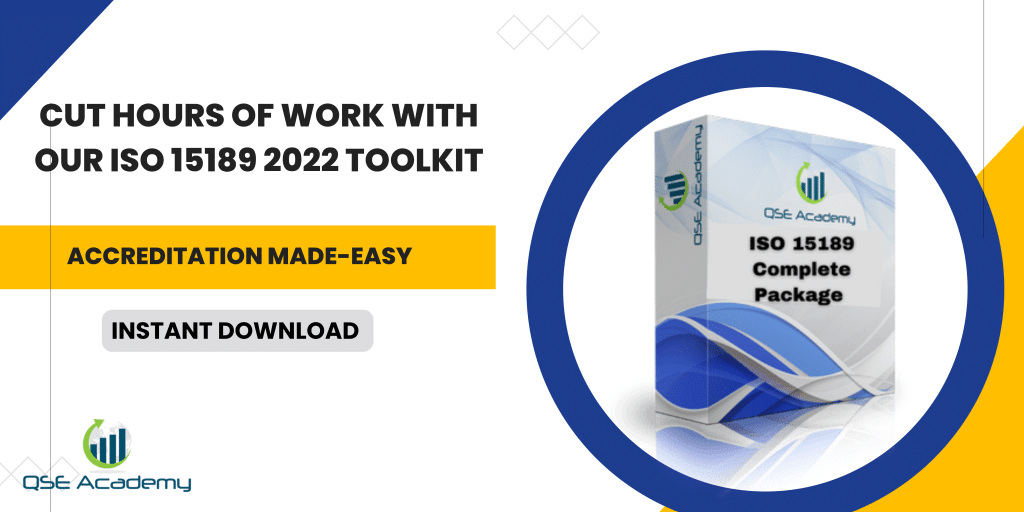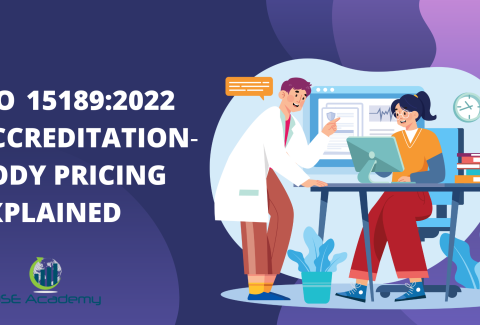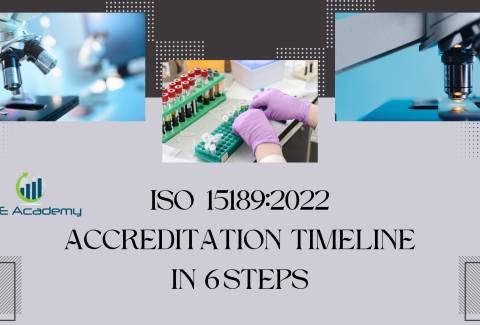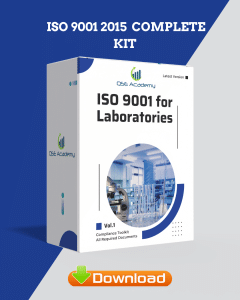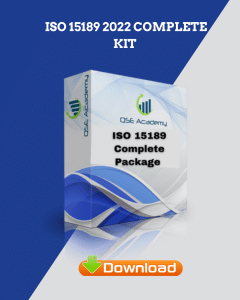Who Needs ISO 15189 2022: Labs, Clinics, and Healthcare Providers
Last Updated on October 22, 2025 by Hafsa J.
Who Needs ISO 15189 2022: Labs, Clinics, and Healthcare Providers
Let’s be real—most people assume ISO 15189 is just for big hospital labs or national diagnostic centers. I’ve lost count of how many times I’ve heard, “We’re just a small clinic. That doesn’t apply to us.”
But in my experience, that mindset is exactly what gets labs and clinics blindsided—by audits, client requirements, or worse, patient-impacting mistakes.
I’ve worked with everyone from mobile COVID testing units to specialty outpatient clinics, and here’s what I’ve noticed: if you’re involved in testing that affects diagnosis or treatment, ISO 15189:2022 likely has your name on it.
This isn’t just about compliance—it’s about trust. Patient trust. Clinician trust. Public health trust. And the 2022 revision of the standard makes it crystal clear: quality systems and accountability aren’t optional anymore.
In this article, I’ll walk you through exactly who needs ISO 15189:2022 and why it matters. You’ll learn what kinds of organizations fall under the standard, how to tell if yours does, and what to do if you’re not sure where to start.
Let’s clear up the confusion—because when it comes to quality, no one should be guessing.
What Is ISO 15189:2022
Before we talk about who needs this standard, we’ve got to get one thing straight—what it actually is.
ISO 15189:2022 is the international standard that sets the bar for quality and competence in medical laboratories. It covers everything from how you collect and label samples, to how results are reviewed, reported, and used in clinical decisions.
But here’s where things get interesting: the 2022 version didn’t just tidy up a few clauses. It shifted the focus.
Now we’re talking about:
-
Risk-based thinking: Labs are expected to identify and manage problems before they cause harm.
-
Patient safety: No longer a buzzword—it’s now a structured part of your quality system.
-
Point-of-Care Testing (POCT): Yes, the rapid tests done in clinics, wards, or even community centers? Those are officially in-scope now.
Why this matters
I’ve worked with labs that thought ISO 15189 was just about lab coats and SOPs. But once they started tying it to things like patient outcomes, clinician trust, and diagnostic delays, it clicked: this isn’t just a compliance exercise—it’s how you build a lab people can rely on.
And that applies whether you’re running a full-scale diagnostics department or a three-room clinic doing rapid antigen tests.
Medical Laboratories: The Primary Audience
Let’s start with the obvious group—medical laboratories.
If you’re running a lab that performs diagnostic testing for patient care, ISO 15189:2022 is made for you. This includes everything from large hospital-based labs to private diagnostic centers and even regional reference labs.
But here’s the thing I tell my clients all the time: just because you’ve always been “just a lab,” doesn’t mean you can skip quality systems. In fact, the more volume you handle—or the more critical your results—the more ISO 15189 matters.
What does the standard expect from labs?
-
Documented procedures for everything from specimen handling to reporting.
-
Regular staff training and competence assessments.
-
Equipment validation, calibration, and maintenance.
-
Clear lines of responsibility and communication with clinicians.
A quick example from the field:
One of the labs I worked with in Southeast Asia had been operating for years without accreditation. They had decent processes, but zero formal documentation. When a referring hospital asked for proof of quality standards, they lost the contract.
We helped them implement ISO 15189 from the ground up. Within a year, they not only passed their audit—they won back the contract and landed two more. Why? Because now they could prove their results were reliable.
So yes, if you’re a diagnostic lab—this standard isn’t optional. It’s the baseline for trust in patient care.
Clinics and Hospital Departments with Point-of-Care Testing (POCT)
Now here’s where things get tricky—and where a lot of healthcare providers get caught off guard.
If your clinic, hospital ward, or outpatient center is using Point-of-Care Testing (POCT)—think glucose meters, pregnancy tests, rapid flu kits—you may not call it a lab, but under ISO 15189:2022, you’re still responsible for the quality of those results.
This is one of the biggest shifts in the updated standard. POCT isn’t a gray area anymore. If your facility performs tests that feed into a medical diagnosis, ISO expects you to apply the same level of oversight you’d give to a central lab.
In my experience, this is where the problems start.
I worked with a private hospital recently that had POCT happening in the ER, ICU, and even outpatient clinics. Nurses were trained, but there was no formal documentation. No QC logs. No system to check if the devices were working properly.
When they started preparing for ISO 15189:2022, it was clear they needed a POCT oversight plan—fast. We helped them create a simple system: assign a lab staff member to oversee POCT, set up regular calibration checks, and build a training log.
It wasn’t complicated—but it was essential. And during their audit? Zero nonconformities tied to POCT.
Here’s what ISO expects:
-
Trained personnel using POCT devices, with documented competence checks.
-
Equipment maintenance and calibration, just like in a central lab.
-
Traceability and result verification, especially for critical results.
If your clinic or department is generating test results that influence care—even outside the lab—you’re on the hook to make sure those results are accurate.
Mobile and Decentralized Testing Units
Let’s talk about a group that often flies under the radar—mobile labs and outreach testing units.
Whether you’re running COVID swabbing stations, community health vans, or field testing in remote areas, if the results from those tests are used in diagnosing or treating patients, then yes—ISO 15189:2022 applies to you too.
And I get it. Mobile environments are fast-paced and resource-limited. But quality standards don’t disappear just because your lab’s on wheels or set up in a tent. The results still impact patient care—and the standard expects those results to be just as reliable as ones from a fixed facility.
Here’s what I’ve seen in the field:
I worked with a diagnostics provider running mobile COVID units across several provinces. Initially, they focused only on the basics—collection, transport, and reporting. But as demand grew, they started doing rapid testing and even sample analysis on-site.
That’s when the risks started creeping in: inconsistent temperature control, staff rotating without proper training, and gaps in documentation. We stepped in and helped them bring their mobile units in line with ISO 15189:2022—standardized protocols, proper chain of custody, and a simple digital checklist for every shift.
Result? Their sample rejection rate dropped, and they qualified for new government tenders that required ISO-compliant practices.
What ISO 15189 expects for decentralized setups:
-
Clear procedures for sample collection, handling, and transport.
-
Documented equipment maintenance, even for portable devices.
-
Staff trained for mobile environments, not just standard labs.
The bottom line? Being mobile doesn’t exempt you from quality—it just changes how you manage it.
Research Labs with Clinical Output
Here’s one that catches a lot of academic and private research labs by surprise.
If your lab is primarily research-focused but produces results that influence clinical decisions—even occasionally—you’re no longer flying under the radar. Under ISO 15189:2022, you’re expected to meet the same quality and competence standards as a traditional diagnostic lab.
I’ve seen this scenario play out often in university-affiliated genomics labs or cancer research centers. They start out doing purely investigative work. But then they’re asked to run high-complexity tests for physicians or supply diagnostic-grade reports for patient care.
And suddenly, the stakes change.
One example that sticks with me:
I worked with a genetics lab based at a research hospital. For years, they operated with a strong academic reputation, but no formal quality system. Then they partnered with the clinical oncology team to provide diagnostic-grade sequencing results.
That’s when they hit a wall. The clinicians needed those results fast, and they needed them to be bulletproof—validated, traceable, and consistently accurate.
We helped the lab align with ISO 15189 by mapping out their processes, validating every workflow step, and tightening up their documentation. Within months, they became a trusted clinical partner—and eventually, an ISO-accredited lab.
What ISO 15189 expects from research labs with clinical output:
-
Clear validation protocols for any test used to support diagnosis or treatment.
-
Robust quality management systems, not just academic rigor.
-
Staff training that meets clinical competence standards, not just research skills.
So, if your research crosses into patient care—even a little—you can’t ignore this standard.
Outsourcing Partners and Referral Labs
Here’s something a lot of clinics and hospitals overlook—outsourcing doesn’t mean outsourcing responsibility.
If your organization sends patient samples to an outside lab—whether it’s across town or across the globe—you’re still on the hook for the quality of those results. And under ISO 15189:2022, that means making sure your referral labs meet the same standards you’d hold your own lab to.
This comes up all the time. A hospital contracts a third-party lab for specialized testing. Everything seems fine—until a delayed or inaccurate result causes a clinical issue. And guess who gets the complaint? Not the referral lab. You.
I saw this firsthand with a hospital group in the Middle East.
They were outsourcing molecular testing to an overseas lab. But when ISO 15189:2022 added pressure for better traceability and oversight, they realized they had zero documentation on the lab’s competence, turnaround expectations, or corrective actions.
We helped them formalize their vendor selection process, include ISO 15189 as a non-negotiable requirement, and build a referral lab monitoring system. Not only did it reduce risk—it also gave them more leverage in contract negotiations.
What ISO expects when you outsource:
-
Formal agreements with referral labs that define quality expectations.
-
Proof that outsourced labs meet equivalent accreditation standards (ideally ISO 15189).
-
Regular review and risk assessment of the labs you rely on.
So even if the testing doesn’t happen under your roof, the responsibility for quality and patient safety still lands on you.
Getting ISO 15189 Right—No Matter Who You Are
Whether you’re running a full-scale diagnostics lab or a small clinic doing a few rapid tests, navigating ISO 15189:2022 can feel overwhelming. But it doesn’t have to be.
Here are a few things I always share with clients—because they save time, reduce stress, and help you focus on what really matters: reliable results and safer patient care.
Pro Tip 1: If It Touches a Diagnosis, It’s In Scope
“One clinic I worked with didn’t think their POCT setup mattered—until a regulatory body asked for their quality documentation. Their lab wasn’t even performing the tests directly, but they were responsible for the outcome. ISO doesn’t care who pressed the button—it cares about who’s accountable.”
Pro Tip 2: Accreditation Boosts More Than Compliance
“A private lab I supported got ISO 15189 certified to satisfy a client requirement. But within a year, they used that certification to win three new contracts and expand into hospital partnerships. Accreditation isn’t just about staying legal—it’s a credibility builder.”
Pro Tip 3: You Don’t Need a Giant Team—Just Clear Roles
“I’ve seen five-person labs implement ISO 15189 better than fifty-person teams. The difference? Clarity. Everyone knew their responsibilities. If you document what’s needed and train your staff well, size doesn’t hold you back—confusion does.”
Pro Tip 4: Use POCT Oversight to Build Interdepartmental Trust
“When you start helping nurses, clinicians, or remote teams get their POCT right, something great happens—they trust your lab more. You’re not just ‘the lab people’ anymore. You’re part of the care team.”
These aren’t just compliance strategies—they’re culture-shifting habits. ISO 15189 isn’t about chasing certificates. It’s about building systems that help people do their jobs better—and protect patients in the process.
Top FAQs (Real Questions from Real Clients)
Q: We’re a small clinic. Do we really need ISO 15189?
A: If you’re performing or overseeing diagnostic testing—even with POCT—the short answer is yes. The standard scales to fit small facilities. It’s about consistency, not size.
Q: What if we outsource all our testing?
A: You’re still responsible for the results. That means ensuring your referral labs follow ISO 15189—or an equivalent system—and having formal agreements and documentation to back it up.
Q: When do we have to implement the 2022 version?
A: Most accreditation bodies are requiring full transition by the end of 2025. But if you’re planning a new contract, preparing for an audit, or expanding services, it makes sense to start now. The earlier you build your system around the new version, the smoother your audit will be.
ISO 15189 Isn’t Just for Labs Anymore
Here’s the bottom line: ISO 15189:2022 has widened the lens. It’s not just for central labs anymore—it’s for anyone involved in diagnostic testing that impacts patient care.
If you’re running a clinic with POCT, overseeing mobile testing units, managing research labs that generate clinical data, or outsourcing lab work to third parties—you’re in scope. The sooner you recognize that, the sooner you can take control of your quality systems and protect your patients, your team, and your reputation.
In my work with healthcare providers around the world, I’ve seen what happens when organizations wait too long—or try to patch things up only when a client or regulator asks for proof. And I’ve also seen the transformation that happens when teams take ISO 15189 seriously: better processes, stronger trust, and fewer surprises when it matters most.
So don’t wait until you’re under pressure.
Whether it’s ISO 9001, ISO 22000, or the cosmetics-focused ISO 22716, I’ve spent my career I’m not here to call myself an expert—I prefer “enthusiast” because I truly love what I do. When I’m not writing about standards, you’ll probably find me playing Piano 🎹, connecting with people, or diving into my next big project💫. I’m an engineer specialized in the food and agricultural industry
make ISO standards less intimidating and more approachable for everyone.
turning complex jargon into clear, actionable steps that businesses can actually use.
There’s something incredibly rewarding about helping people navigate food safety and quality management systems
in a way that feels simple, practical, and even enjoyable.
I have a Master’s in QHSE management and over 12 years of experience as a Quality Manager
I’ve helped more than 15 companies implement ISO 9001, ISO 22000, ISO 22716, GMP, and other standards
My clients include food producers, cosmetics manufacturers, laboratories, and service companies
I believe quality systems should be simple, useful, and efficient.

